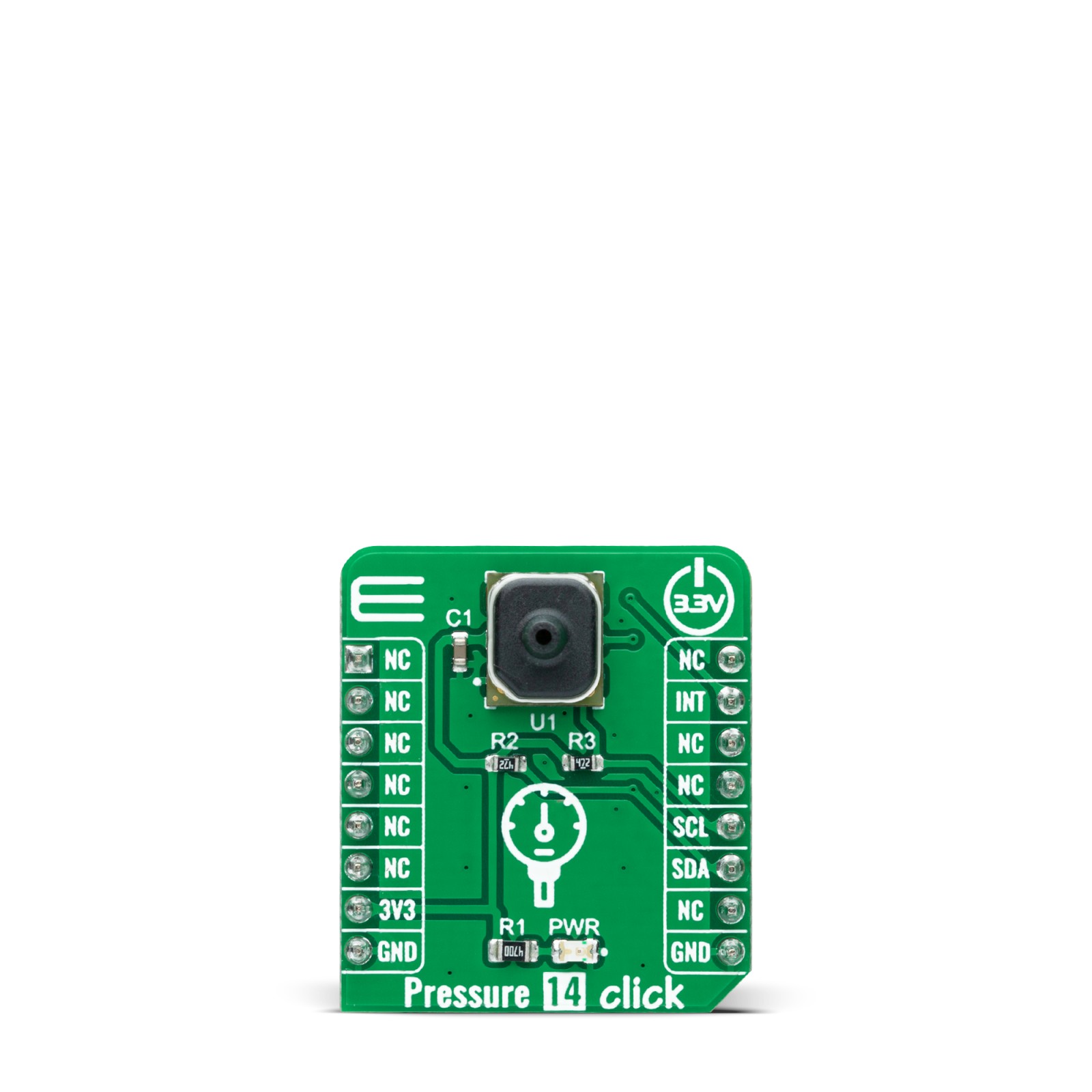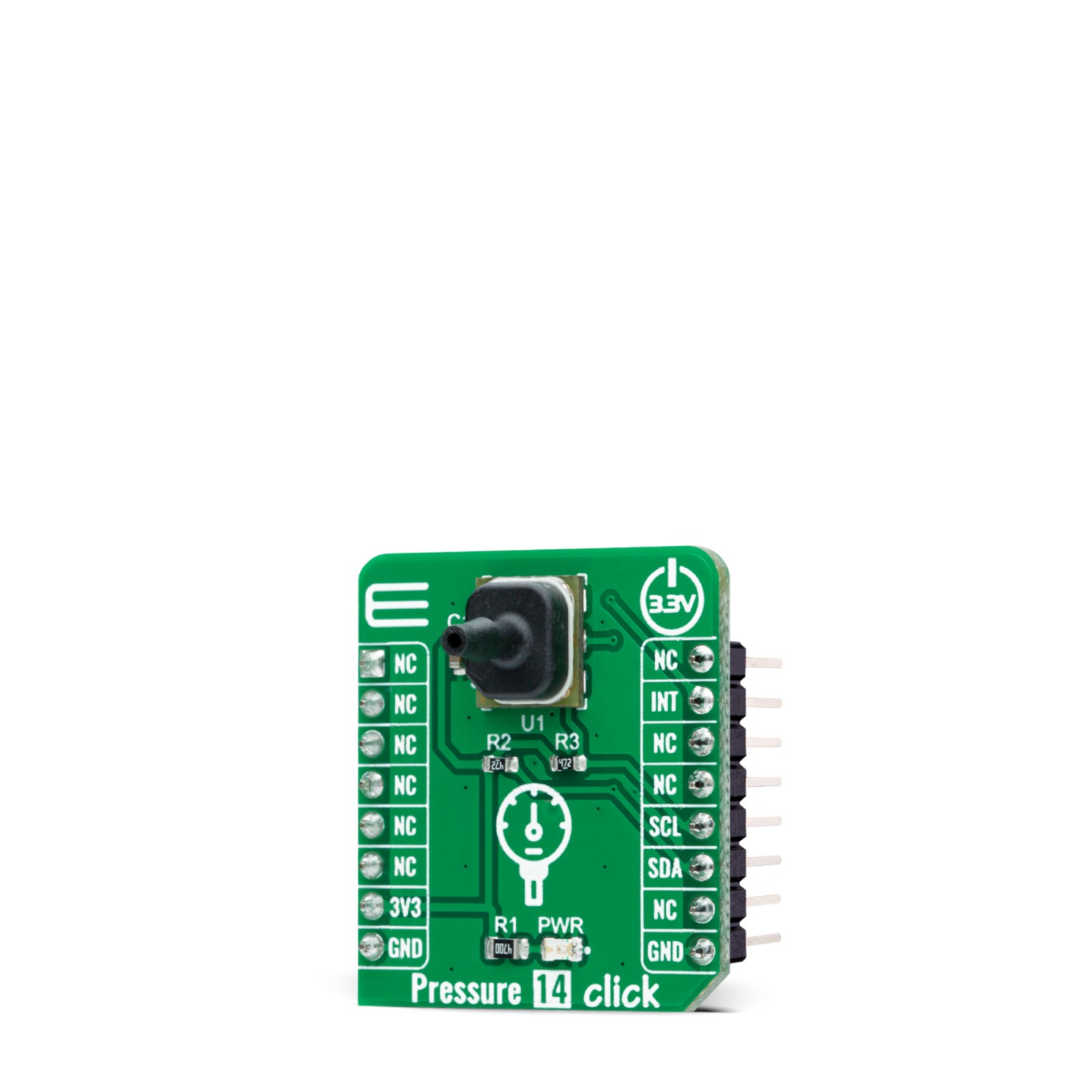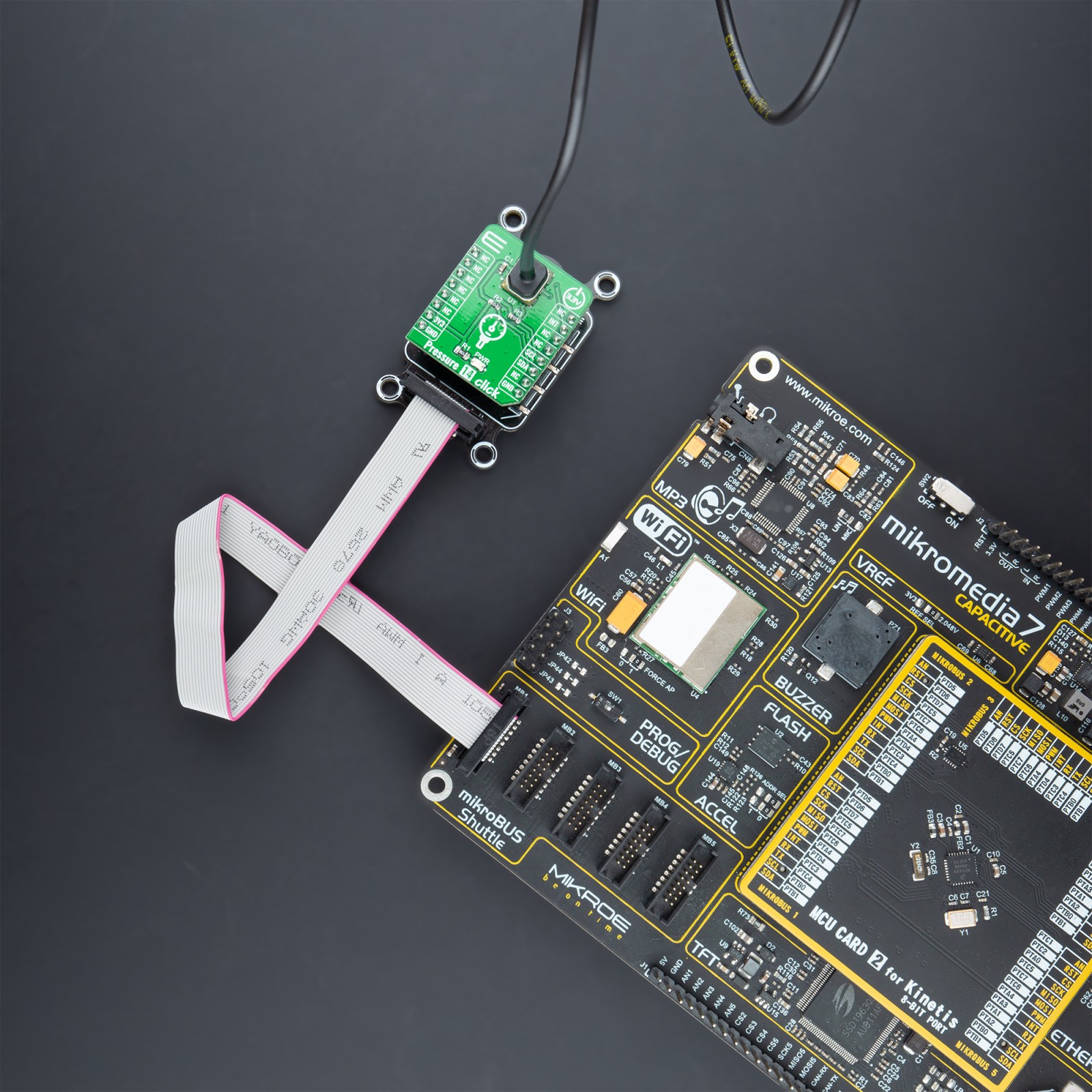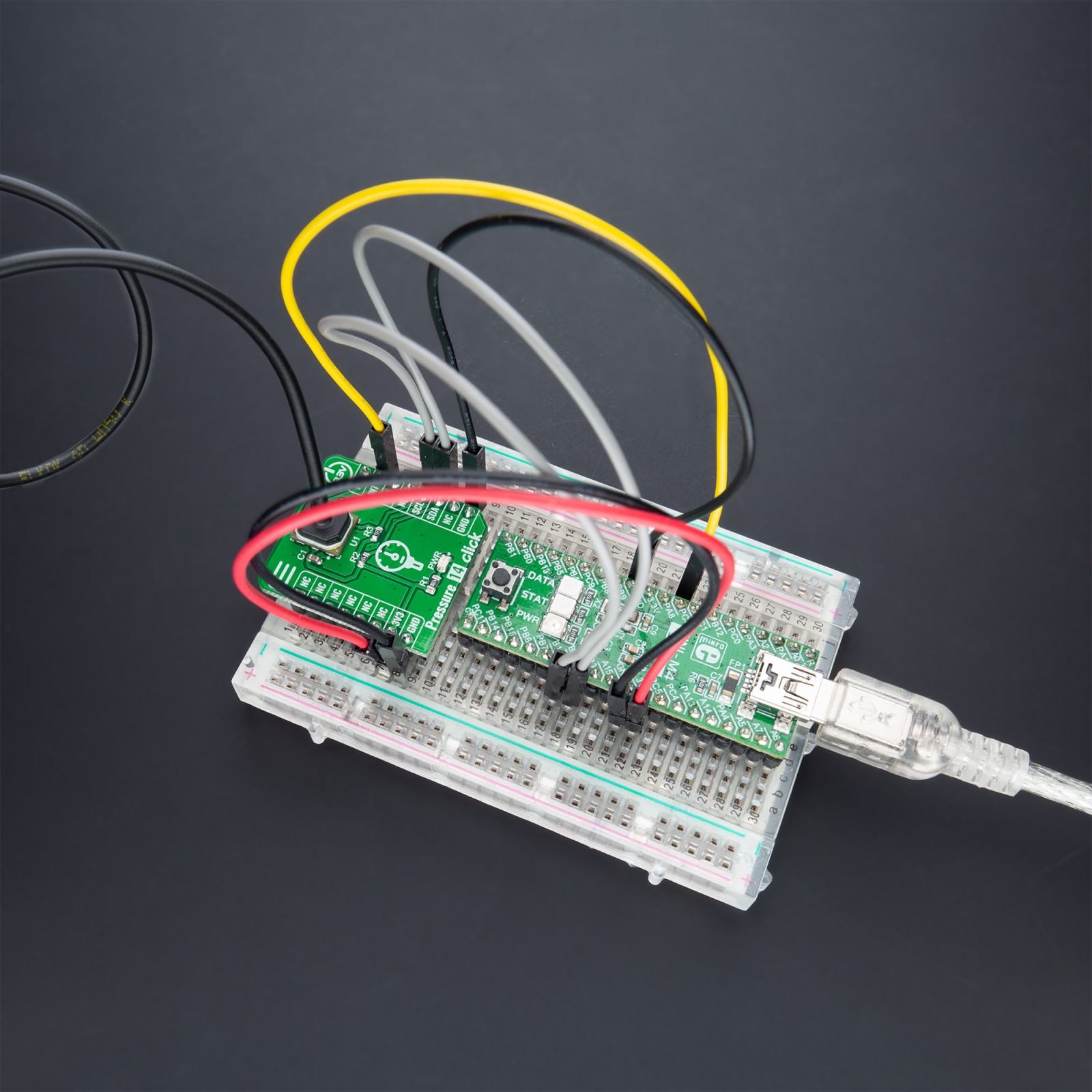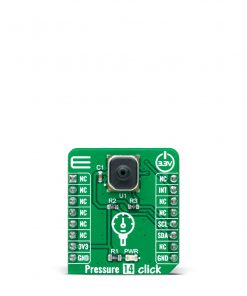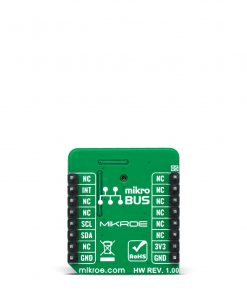Pressure 14 Click
R855.00 ex. VAT
Pressure 14 Click is a compact add-on board that contains a board-mount pressure sensor. This board features the ABP2LANT060PG2A3XX, a piezoresistive silicon pressure sensor offering a digital output for reading pressure over the specified full-scale pressure span and a temperature range from Honeywell Sensing and Productivity Solutions. This I2C configurable sensor is calibrated and temperature compensated for sensor offset, sensitivity, temperature effects, and accuracy errors, including non-linearity, repeatability, and hysteresis, using an on-board ASIC. This Click board™ is suitable for pressure measurements in automotive applications, industrial and consumer applications.
Pressure 14 Click is supported by a mikroSDK compliant library, which includes functions that simplify software development. This Click board™ comes as a fully tested product, ready to be used on a system equipped with the mikroBUS™ socket.
Stock: Lead-time applicable.
| 5+ | R812.25 |
| 10+ | R769.50 |
| 15+ | R726.75 |
| 20+ | R699.39 |

